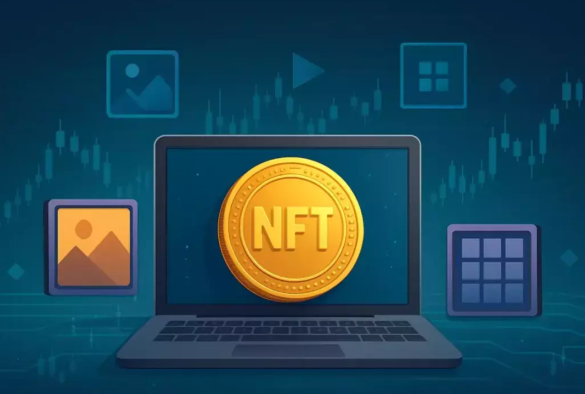The world of NFTs (Non-Fungible Tokens) has often been associated with Ethereum, Solana, or other blockchains. But more recently, a new trend has emerged: Bitcoin NFTs. These are unique digital assets tied to the Bitcoin blockchain, giving them the security and stability of Bitcoin while delivering the creativity, ownership, and possibilities of NFTs.
In this article, we’ll unpack:
-
What Bitcoin NFT / Bitcoin NFTs are
-
How they work technically
-
What sets them apart from non-Bitcoin NFTs
-
Their use cases, benefits, and challenges
-
Platforms and marketplaces (including Horizon-type services)
-
How to get involved safely
Let’s dive in.
What Is a Bitcoin NFT?
A Bitcoin NFT is a non-fungible token that uses or is secured by the Bitcoin blockchain. Unlike typical NFTs minted on Ethereum or blockchains built for smart contracts, Bitcoin NFTs use different mechanisms (or additional protocols/layers) to embed uniqueness on Bitcoin’s ledger.
Key points:
-
Uniqueness: Each Bitcoin NFT is distinct, cannot be exchanged one-for-one with another token (just like NFTs elsewhere).
-
Security & stability: Because they leverage Bitcoin’s well-tested blockchain, they may benefit from higher trust & resistance to attack.
-
Protocols involved: Some Bitcoin NFT projects use sidechains or layer-2 solutions. Others use concepts like ordinal inscriptions (attaching data to individual satoshis—the smallest units of Bitcoin). Sources like Tangem explain that Bitcoin NFTs represent non-fungible tokens created or linked to the Bitcoin blockchain, offering distinctive ownership and authenticity.
According to articles like “Bitcoin NFTs Explained: What They Are…” from Hiro, Bitcoin NFTs are often built using a protocol like Stacks, which allows smart-contract-like functionality anchored to Bitcoin.
How Do Bitcoin NFTs Work
Because Bitcoin was not originally designed for NFTs (unlike Ethereum with ERC-721 or ERC-1155), the way NFTs work on Bitcoin is a bit different. Here are some of the technical mechanisms:
-
Ordinals / Inscriptions
This is one of the popular ways: you take a satoshi (the smallest unit of Bitcoin) and “inscribe” data into it—this could include images, metadata, etc. This makes that particular satoshi carry something unique. -
Sidechains & Layers
Some Bitcoin NFT projects use auxiliary chains or layer-2 frameworks that interoperate with Bitcoin to enable more complex NFT features (metadata storage, trading, etc.). -
Linking via Protocols
Instead of everything being on Bitcoin directly, many projects store the actual content (art, music, etc.) off-chain (e.g. decentralized storage like IPFS), and what’s on Bitcoin is a pointer or certificate of ownership. -
Smart Contract-like Functionality via overlays (e.g. Stacks, Runes, etc.)
Because Bitcoin itself is limited in scripting, these overlays allow creators to build marketplace features, royalties, and ownership records connected to Bitcoin.
These mechanisms are still developing, which means there are trade-offs. For instance, inscription size can impact cost, storage, and speed. There may also be limitations in metadata management, marketplace maturity, and transaction fees.
Bitcoin NFT vs. Other NFTs
To understand why people are excited about Bitcoin NFTs, it helps to compare them with NFTs on more traditional smart-contract blockchains like Ethereum:
| Feature | Bitcoin NFTs | Traditional/Ethereum-type NFTs |
|---|---|---|
| Blockchain security | Uses Bitcoin’s highly secure network | Depends on the security of the specific blockchain (often strong, but varying) |
| Smart contract flexibility | More limited unless using overlay / sidechains | Very flexible: royalties, programmable logic, etc. |
| Transaction costs | Can be high for large inscriptions, or depending on congestion | Costs vary; on Ethereum high gas, on others lower |
| Ecosystem & tooling | Relatively newer, growing | Mature: many marketplaces, tools, developer support |
| Community & trust | Benefit from Bitcoin’s established reputation | Also trusted, but sometimes face critique around scaling or energy use |
So, for some creators or collectors, Bitcoin NFTs offer an appealing combination: using a blockchain many trust, while gaining NFT-like ownership and possibilities.
Use Cases & Benefits of Bitcoin NFTs
Why do people make or collect Bitcoin NFTs? What are the advantages?
-
Art & digital collectibles — Unique digital artwork, trading cards, or limited-edition items with ownership secured by Bitcoin.
-
Legacy appeal & prestige — Bitcoin is one of the earliest and most trusted blockchains. Having an NFT tied to Bitcoin has symbolic value for some collectors.
-
Security & permanence — Because the Bitcoin ledger is robust and globally distributed, data linked to it may be more resilient to attacks or failure.
-
New creative expression — Some artists like the challenge of creating art within the constraints of Bitcoin inscriptions or narrative stories that connect more deeply with Bitcoin culture.
How to Get Started with Bitcoin NFTs
If you’re curious about creating, collecting, or trading Bitcoin NFTs, here’s a simple path you can follow:
-
Learn the protocols — Understand Ordinals, Stacks, inscriptions, how content is stored, what’s on-chain vs off-chain.
-
Choose a wallet that supports Bitcoin NFTs (some wallets are building this capacity especially for Ordinals or Stacks).
-
Pick a marketplace — Ensure the platform supports Bitcoin NFTs you want, check fees, metadata storage, marketplace rules.
-
Mint / create your NFT — If you are an artist, plan your content size, format, and how you will store the file (IPFS, etc.).
-
List / promote — Use social media, NFT communities, crypto forums to promote. The rarity and story often matter as much as the art itself.
-
Verify authenticity and preservation — Understand how provenance works, whether metadata will persist, whether the platform supports resale/royalties, etc.
Why Bitcoin NFTs Could Shape the Future
Here’s where things get exciting. The rise of Bitcoin NFTs has implications that go beyond novelty:
-
Broader adoption of NFTs as part of mainstream Bitcoin culture. Because Bitcoin has a large user base, integrating NFTs might bring more people into the NFT world who previously stuck with “just Bitcoin.”
-
Innovation in usage — Things like digital identity, ticketing, memberships, and access passes tied to Bitcoin NFTs could become more common.
-
Cross-chain integration — Tools that allow bridging or interoperability between Bitcoin NFTs and NFTs on other chains could reduce friction and make the NFT ecosystem more unified.
-
Culture & creativity — Artists, musicians and creators may enjoy the storytelling possibilities of Bitcoin NFTs because of the ledger’s history and trust.
Summary
Bitcoin NFTs are a fascinating, evolving segment of the NFT ecosystem. They combine the uniqueness and creativity of non-fungible tokens with the strong security, trust, and world recognition of the Bitcoin blockchain. Whether you’re a digital artist, collector, or simply curious about Web3 trends, Bitcoin NFTs offer a promising new path.

